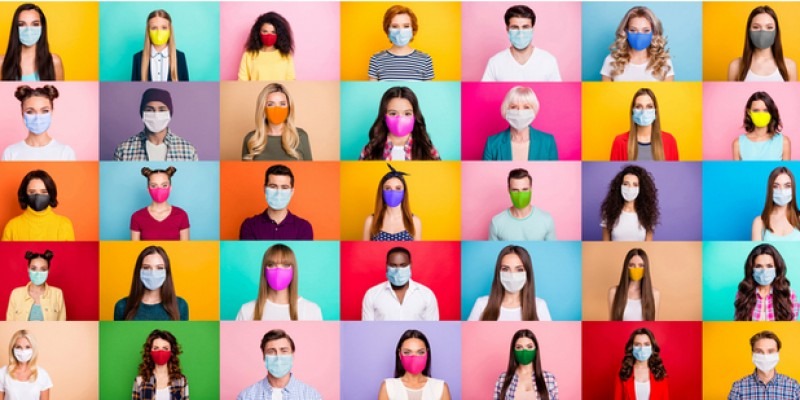
No matter how you feel about it, we’re all going to have to start regularly wearing face masks very soon.
As of 6 June, the World Health Organisation (WHO) advised all people to wear fabric face masks in public where social distancing is not possible. Latest research shows they can provide “a barrier for potentially infectious droplets”.
From next Monday 15 June, it will be compulsory to wear a face covering on public transport (buses, trains, ferries and planes) in England. Transport Secretary Grant Shapps advises passengers should wear "the kind of face covering you can easily make at home". Surgical masks should be reserved for medical uses.
There will also be requirements for hospital visitors and outpatients to wear coverings and all NHS staff will need to be wear surgical masks at all times, in all areas. I wonder if it won’t be long before face coverings are also recommended for use in some workplaces in the post Covid-19 world.
So, now’s the time to get out your sewing kit and start making your own mask. Use your own creative licence and make your own face covering from material that you have in your house.
How to make your own cloth mask
Looking on the CDC (Centers for Disease Control and Prevention), they give a number of step by step instructions on how to make your own cloth face covering.
Best materials to use: tightly woven cottons, quilted cotton, twill or natural silk.
Fit: You’re aiming for a snug fit.
Layering: the more layers of material the better. You should be able to breathe easily when wearing a mask.
1. Bandana Mask
Simply made by folding cloth and attaching elastic bands – easy peasy.
Materials: bandana or handkerchief and elastic bands
Method: Follow the BBC guide for a step-by-step guide. This video from Dr Jerome Adams, U.S. Surgeon General shows how easy it is.
2. T-shirt Mask
Cut up an old T-shirt and use safety pins to pin it together. You can even add in your own filter using paper towels or coffee filters.
Materials: T-shirt, scissors, kitchen towel, safety pins
Method: Check out the BBC guide for a step-by-step guide.
3. Sewing Mask
Either hand or machine sew a hem and gather the sides with elastic.
Materials: cloth, needle and thread, scissors, elastic, kitchen towel
Method: Follow the BBC guide for a step-by-step guide.
If you really can’t face making one yourself, lots of local dressmakers are turning their hand to making face masks so you can usually find someone through your local coronavirus support group. Changes Bristol have also set up Masks for Good where skilled sewing volunteers are making masks. If you buy one, you're raising money to support mental health support groups in Bristol.
• Prepare – wash hands or use hand sanitation gel before putting mask on
• Whilst wearing – do not touch your eyes, nose or mouth
• Remember - Homemade masks do not stop you contracting the virus. They stop you passing the disease onto others. The more people wear them, the safer for everyone.
• When you get home - wash your hands for at least 20 seconds.
• Storage - Keep your face covering in a plastic bag until you are ready to wash it
• Washing - Wash along with normal clothes regularly using normal detergent
• Alert - If you have coronavirus symptoms, do not go out of the house even if you are wearing a mask (and follow government guidance on self-isolating)
• Not included – children, disabled people, those with breathing difficulties are not required to wear masks.
So, now’s the time to get creative with your very own lockdown mask-making project.
For further coronavirus guidance and support for businesses, employers and employees in the region, please access our Trading through Coronavirus Hub.
N.B. This is simply a blog offering some guidance and ideas for readers; for government guidance on keeping safe from coronavirus please refer to https://www.gov.uk/coronavirus.
- Log in to post comments